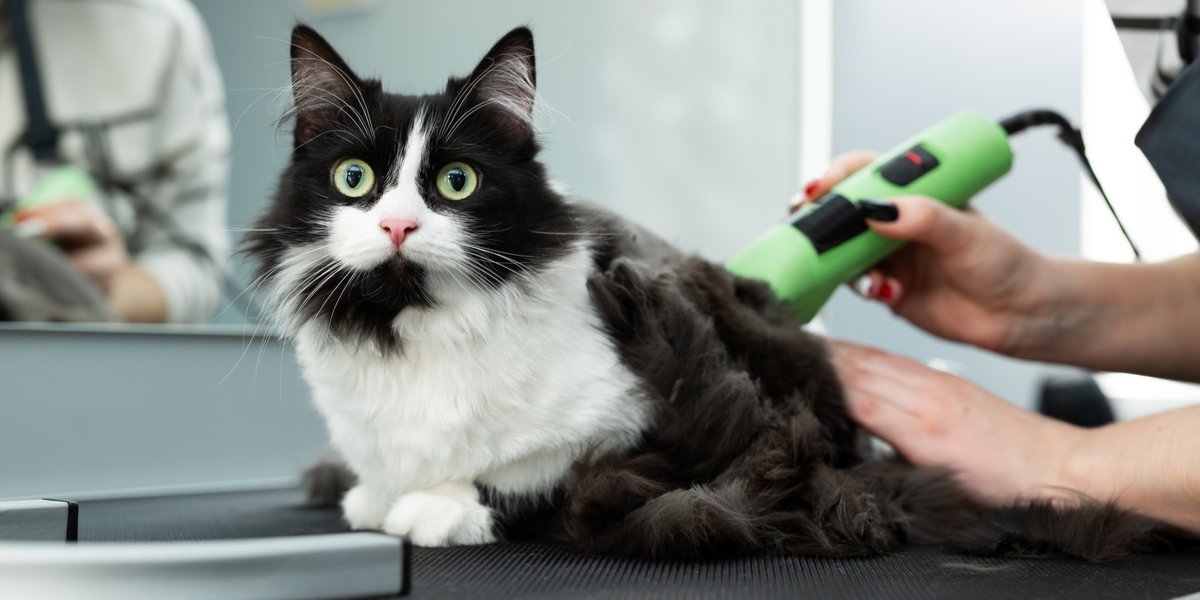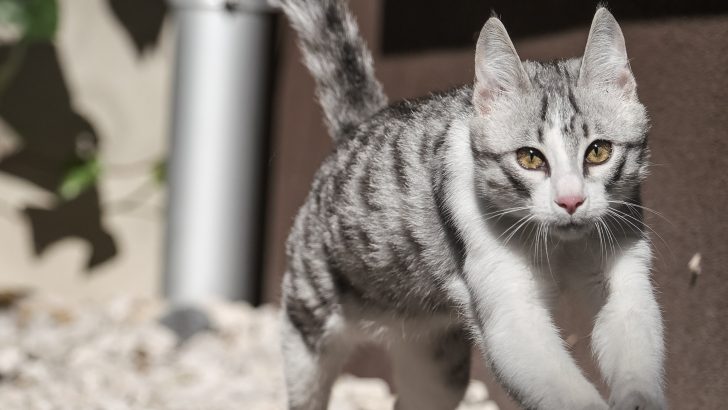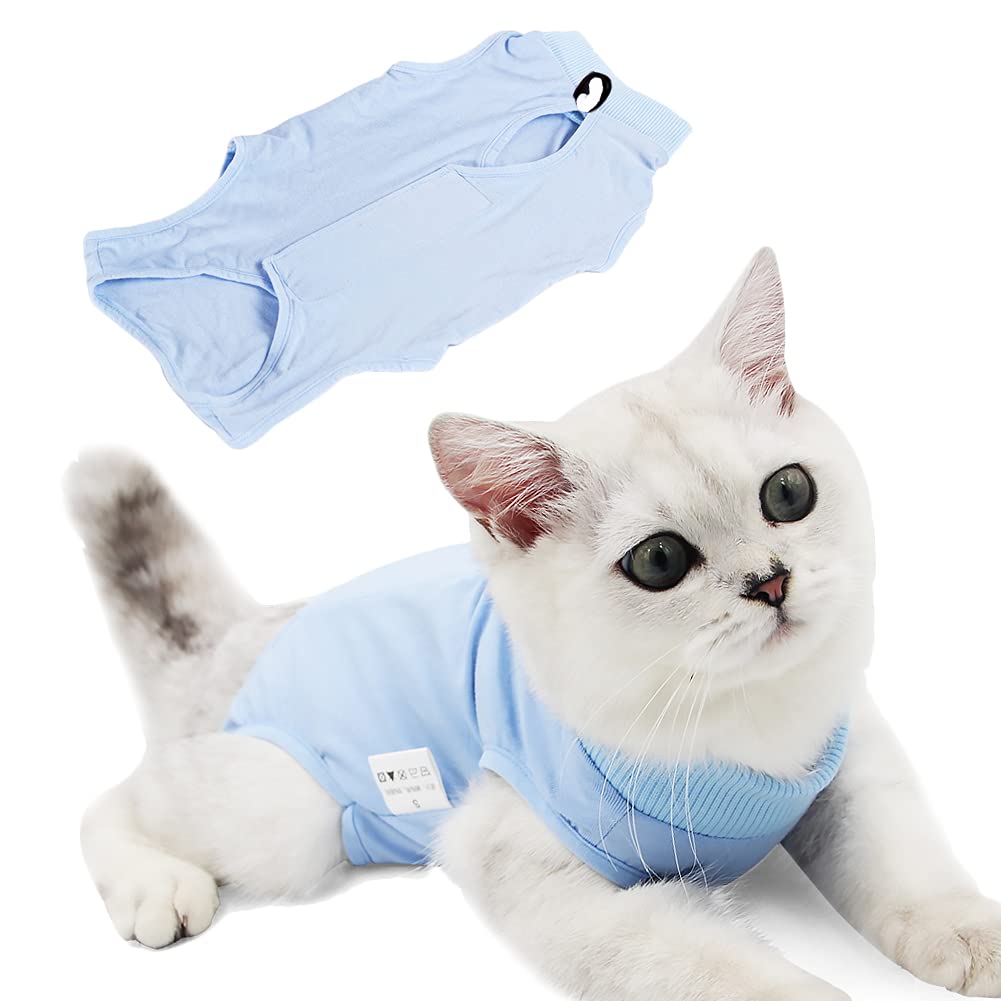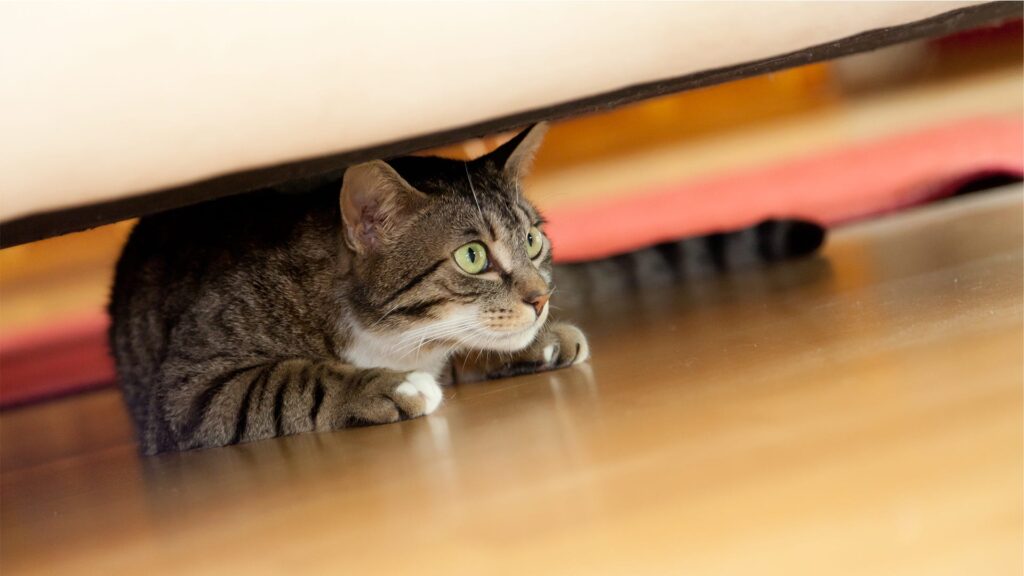Shaving a cat that hates it can be challenging, but these 7 effective tips can help you succeed. Shaving a cat that despises the process can be a daunting task.
However, in certain situations, shaving becomes necessary for their well-being or due to medical reasons. It is essential to approach the situation with patience and care to ensure the safety and comfort of both you and your furry friend. This article will provide seven effective tips to help you navigate the process of shaving a reluctant cat.
By following these tips, you can make the grooming experience less stressful and more manageable for both you and your cat.
Contents
- 1 1. Understanding The Challenge: A Cat That Hates Being Shaved
- 2 1.1 Understanding A Cat’s Natural Instincts And Sensitivities
- 3 1.2 Recognizing Signs Of Discomfort Or Stress In Your Cat
- 4 2. Preparing And Creating A Positive Environment For Shaving
- 5 2.1 Acquiring The Right Tools For A Successful Shave
- 6 2.2 Setting Up A Calm And Comfortable Shaving Space
- 7 3. Step-by-step Guide: Effective Tips For Shaving A Cat That Hates It
- 8 3.1 Pre-shave Preparations: Gaining Trust And Relaxation
- 9 3.2 Techniques To Minimize Stress And Discomfort
- 10 3.3 The Actual Shaving Process: Step By Step
- 11 4. Post-shave Care: Ensuring Your Cat’s Comfort And Well-being
- 12 4.1 Post-shave Care And Soothing Techniques
- 13 4.2 Monitoring Your Cat’s Reaction And Addressing Concerns
- 14 Frequently Asked Questions On How To Shave A Cat That Hates It? 7 Effective Tips
- 15 Conclusion
1. Understanding The Challenge: A Cat That Hates Being Shaved
Understanding the Challenge: A Cat that Hates Being Shaved
Cats may dislike being shaved for various reasons. Some cats have a strong aversion to being restrained or experiencing discomfort. Others may have had a negative past experience with grooming, making them anxious and resistant. Proper grooming, however, is important for a cat’s well-being. Regular shaving helps prevent matting and hairballs, and ensures good hygiene.
Approaching the shaving process with empathy and patience is crucial. Start by familiarizing your cat with the tools and environment. Introduce the clippers gradually, allowing them to sniff and inspect. Use positive reinforcement with treats and praise. Begin with shorter sessions, gradually lengthening them as your cat becomes more comfortable.
Distracting your cat with their favorite toy or treats can help alleviate stress. Consider using calming aids like pheromone sprays or music designed for cats. If your cat becomes too agitated, it’s best to stop and try again later.
Remember, patience and understanding are key when shaving a cat that hates it. With time and gentle handling, you can help your cat overcome their aversion and make the grooming process a more positive experience.

Credit: cats.com
1.1 Understanding A Cat’s Natural Instincts And Sensitivities
Exploring a cat’s natural grooming behaviors can provide insight into why some cats may hate being shaved. Cats are meticulous groomers, spending a significant amount of time licking and cleaning themselves. This instinctual behavior is crucial for maintaining their coat’s cleanliness and regulating body temperature. Understanding this aspect can help us approach cat shaving in a more sensitive and effective way.
Cats have specific areas on their bodies that are more sensitive and can trigger discomfort or fear when touched. The belly, paws, and tail base are common areas that cats are particularly sensitive about. Knowing these sensitive spots can help us navigate grooming and shaving procedures with caution and respect for the cat’s boundaries.
When shaving a cat that hates it, it is essential to approach the process gradually and patiently. Using positive reinforcement techniques, such as treats or praise, can help create a more positive association with the grooming experience. Additionally, using grooming tools specifically designed for cats, like a cat-friendly razor or clipper, can help minimize any potential discomfort during the shaving process.
By understanding a cat’s natural grooming behaviors and sensitivities, we can approach the task of shaving a cat that hates it with empathy and an understanding of their needs, ultimately making the experience less stressful for both the cat and the caregiver.
1.2 Recognizing Signs Of Discomfort Or Stress In Your Cat
It’s important to be aware of the indications that your cat may dislike being shaved. Some common signs of discomfort or stress include restlessness, tense body language, flattened ears, growling, hissing, scratching, or biting. If your cat exhibits any of these behaviors, it is crucial to assess whether shaving is a suitable option for them.
Creating a stress-free environment for your cat can help ease their anxiety during the grooming process. Firstly, make sure to choose a quiet and calm location for the shaving session. Provide familiar and comforting objects, such as their favorite blanket or toy, to help reduce their stress levels. Additionally, consider using positive reinforcement techniques like treats or gentle praise to reward your cat for their cooperation and help them associate grooming with positive experiences.
Remember, each cat is unique, and their comfort should be prioritized. If your cat consistently exhibits extreme stress or discomfort during attempts to shave them, it may be wise to consult with a professional groomer or veterinarian for alternative solutions.
2. Preparing And Creating A Positive Environment For Shaving
To successfully shave a cat that hates it, it is essential to prepare and create a positive environment for the process. Gathering necessary tools beforehand ensures a smoother shaving experience. These tools may include:
| Essential Tools | Additional Tools |
|---|---|
| Electric Clippers | Nail Clippers |
| Scissors with Rounded Tips | Soft Cloth |
| Comb or Brush | Animal-Friendly Shaving Cream |
| towel | Dryer |
2.1 Acquiring The Right Tools For A Successful Shave
Acquiring the Right Tools for a Successful Shave
When it comes to shaving a cat that hates it, having the right tools is essential. Here are some recommended tools for cat grooming and shaving:
| Items | Description |
| Clippers | It is important to choose clippers specifically designed for pet grooming. Look for ones with low vibration and noise levels to keep the cat calm. |
| Blades | Opt for blades that are appropriate for your cat’s fur type and desired shave length. Stainless steel blades are recommended for durability. |
By using the right tools, you can ensure a smooth and successful shave for your cat. Remember to approach the grooming process with patience and a gentle touch to minimize stress for your feline friend.
2.2 Setting Up A Calm And Comfortable Shaving Space
Creating a secure and quiet space for your cat is essential when it comes to shaving a cat that hates it. This will help to minimize stress and ensure a more successful grooming experience.
Utilizing soothing techniques such as playing calming music or using pheromone sprays can help create a serene environment. Additionally, you can try using a soft blanket or towel to create a comfortable and familiar space.
Providing distractions can also be helpful in keeping your cat calm during the grooming process. A favorite toy or treat can help to redirect their attention and make the experience more enjoyable for them.
| Setting Up a Calm and Comfortable Shaving Space |
|---|
| Create a secure and quiet environment |
| Utilize soothing techniques |
| Provide distractions |
3. Step-by-step Guide: Effective Tips For Shaving A Cat That Hates It
Discover effective tips for shaving a cat who hates it with this step-by-step guide. Learn how to approach the process in a way that’s cat-friendly and stress-free.
Pre-shave Preparations For A Successful Grooming Session
Before attempting to shave a cat that hates it, it’s essential to properly prepare both yourself and the cat. Here are a few tips to get you started:
| 1. Familiarize the cat with the grooming tools | – Gradually introduce the clippers or trimmers to your cat, allowing them to sniff and inspect the tools. |
| 2. Choose a quiet and calm environment | – Find a secluded and serene area where your cat can feel secure and relaxed. |
| 3. Consider using pheromone sprays or calming aids | – These can help reduce anxiety in the cat, making the shaving process less stressful. |
| 4. Use positive reinforcement | – Reward your cat with treats, gentle praise, or playtime to create positive associations with the grooming experience. |
Once you have completed the pre-shave preparations, you can move on to the techniques that can minimize stress and discomfort during the shaving process.
3.1 Pre-shave Preparations: Gaining Trust And Relaxation
Gaining trust and relaxation is crucial before attempting to shave a cat that hates it. Establishing trust and rapport with your cat is the first step towards a successful shaving experience. Spend time bonding with your cat and providing positive reinforcement through treats or gentle strokes. This will help create a sense of security and build trust between you and your feline friend. Preparing your cat’s coat and skin is equally important. Brushing your cat’s fur to remove any tangles or matting will make the shaving process easier and less stressful. Additionally, ensure that your cat’s skin is clean and free from any irritations or infections. Taking these pre-shave preparations will help set the stage for a more comfortable and successful shaving session.
3.2 Techniques To Minimize Stress And Discomfort
Handling and restraining techniques during the shaving process are crucial for minimizing stress and discomfort for a cat that hates it. It is essential to approach the cat calmly and patiently, allowing them to become familiar with the tools and environment. Start by gently stroking and providing treats to create a positive association. Gradually introduce the cat to the sound and vibration of the clippers or razor. Use the minimum amount of restraint necessary, such as wrapping them in a towel or using a cat bag, while ensuring they can still breathe comfortably. Frequent breaks can be taken to give the cat time to relax. Identifying and addressing specific challenges, such as matted fur or sensitive areas, can make the process smoother. Keeping the environment quiet and free from distractions also helps in keeping the cat calm and focused. With these techniques, shaving a cat that hates it can be a calmer and more pleasant experience for both the cat and the owner.
3.3 The Actual Shaving Process: Step By Step
Shaving a cat can be a challenging task, especially if your feline friend is not fond of the process. However, with these 7 effective tips, you can make the shaving experience more tolerable for your cat:
|
Once you have prepared your cat and gathered the necessary tools, you can proceed with the actual shaving process. Here is a step-by-step guide to safely and efficiently shave your cat:
|
Tips For Handling Sensitive Areas And Potential Obstacles |
When approaching sensitive areas during the shaving process, remember to:
If you encounter potential obstacles such as excessive matting or skin issues, it’s important to seek professional help from a groomer or veterinarian. They can provide guidance tailored to your cat’s specific needs. |
4. Post-shave Care: Ensuring Your Cat’s Comfort And Well-being
Aftercare tips and techniques for a successful grooming session: 1. Monitor your cat’s reaction to the grooming process closely. Observe for any signs of discomfort or distress throughout the session. 2. Address any concerns or issues promptly. If your cat is showing signs of stress or agitation post-shave, find ways to soothe and comfort them. Consider using calming techniques such as providing a quiet and secure space, using pheromone sprays, or offering treats as positive reinforcement. 3. Take extra care of your cat’s skin and coat after they have been shaved. Keep them warm during colder weather, and protect their sensitive skin from harsh environmental factors. 4. Help your cat reintegrate with their natural grooming habits. Encourage them to groom themselves by providing them with interactive toys and grooming tools suitable for their post-shave needs. 5. Regularly check your cat’s skin for any signs of irritation, redness, or inflammation. If you notice any abnormalities, consult your veterinarian for further advice. |
4.1 Post-shave Care And Soothing Techniques
After successfully shaving your cat, it is important to provide proper post-shave care to soothe your cat’s skin and reduce irritation. Using the right grooming products can aid in the healing process and ensure your cat feels comfortable. Here are some recommended products for post-shave care:
| Product | Description |
|---|---|
| 1. Cat-specific moisturizer | Avoid human moisturizers as they may contain ingredients that can be harmful to cats. Look for moisturizers specifically formulated for cats to provide hydration and prevent dryness. |
| 2. Calming spray | A calming spray with natural ingredients like chamomile or lavender can help reduce stress and anxiety, promoting a soothing environment for your cat. |
| 3. Aloe vera gel | Aloe vera gel has soothing and healing properties, making it beneficial for reducing skin irritation. Ensure the gel is safe for cats and does not contain any harmful additives. |
| 4. Antiseptic wipes | Antiseptic wipes can be used to gently clean the shaved area and prevent any potential infections. Look for wipes specifically designed for pets. |
Remember to consult with your veterinarian for specific product recommendations that are suitable for your cat’s individual needs. Providing proper post-shave care will help your cat recover quickly and ensure their well-being.
4.2 Monitoring Your Cat’s Reaction And Addressing Concerns
Monitoring your cat’s reaction and addressing concerns is crucial during the shaving process. Look out for signs of potential post-shave issues or distress, such as excessive licking, scratching, or irritability. Keep an eye on the skin for redness, cuts, or any skin irritations. If you notice any of these symptoms, it’s important to seek professional help to ensure your cat’s well-being. A professional groomer or veterinarian can provide guidance and address any concerns you may have.
Additionally, if your cat is displaying behavior that suggests extreme stress or fear during the shaving process, it’s best to seek professional advice. A trained professional will have the experience and tools to safely handle and calm your cat, ensuring a smoother and less stressful experience for both of you.
Frequently Asked Questions On How To Shave A Cat That Hates It? 7 Effective Tips
How Do You Groom An Unwilling Cat?
Grooming an unwilling cat requires patience. Start by introducing grooming slowly, reward with treats, use gentle brushing strokes, and stop if the cat shows signs of distress. Seek professional help if needed.
How Do I Keep My Cat Calm When Shaving?
To keep your cat calm during shaving, follow these tips: 1. Gradually introduce the shaving tools to your cat, allowing them to sniff and explore. 2. Use treats and positive reinforcement to create a positive association with the shaving process.
3. Start with short grooming sessions and gradually increase the time as your cat becomes more comfortable. 4. Use a gentle touch and speak softly to soothe your cat during the shaving process. 5. If needed, consider seeking professional help from a groomer experienced in handling anxious cats.
What Is The Best Tool To Remove Matted Cat Hair?
The best tool to remove matted cat hair is a dematting comb. It is effective in gently untangling knots and removing clumps of hair without causing discomfort to your cat. Regular use can prevent matting and keep your cat’s coat healthy and shiny.
How Do You Immobilize A Cat For Grooming?
To immobilize a cat for grooming, use a gentle yet effective approach such as wrapping the cat in a towel or using a secure, padded carrier. These methods help to keep the cat calm and protect both you and the cat during the grooming process.
Conclusion
Shaving a cat can be a challenging task, especially if your feline companion hates it. However, with the right approach and techniques, you can make the experience more comfortable for both you and your cat. By following these 7 effective tips, such as desensitizing your cat to the process and using the right tools, you can successfully shave your cat without causing too much stress.
Remember, patience, gentleness, and understanding are key when it comes to grooming your furry friend.
Katie Lindsey is a passionate cat lover and founder of Cats Solution, a comprehensive resource for all things feline. With a lifelong love for cats and extensive knowledge in their care and behavior, she provides expert advice and solutions to cat owners. Through her website, Katie fosters a supportive community where cat enthusiasts can find guidance and heartwarming stories. A dedicated advocate for animal welfare, Katie also promotes responsible pet ownership and adoption. Join her on this purr-fect journey celebrating the joy of feline companionship.



